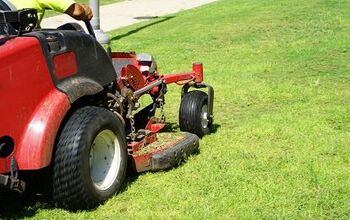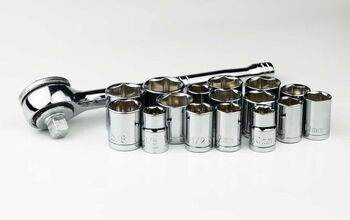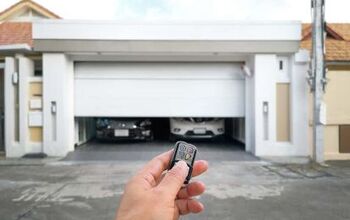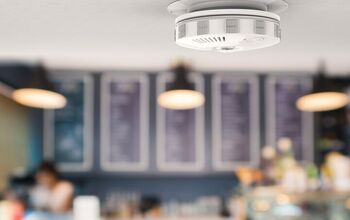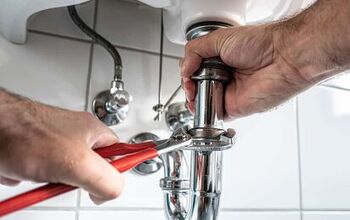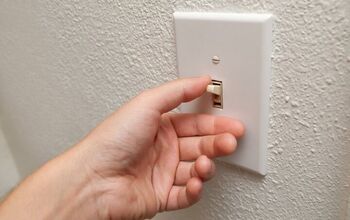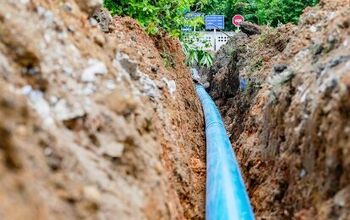How To Help Your Basil Plant Last Longer

Basil is one of the tastiest herbs you can grow in an herb garden. It can live on a windowsill, but it prefers the outdoors. When you grow basil, you likely envision it growing large and bushy, filled with fragrant leaves. These plants can thrive for a year or more if grown correctly. If you love planting this herb, but find it only lasts for a few months, then you’ll need to learn all the secrets to help your basil plant last longer.
Basil plants thrive in moist soil and require six to eight hours of sunlight. The soil should have great drainage, and a mixture of compost, coconut coir, and nutrient-rich soil. Don’t allow your basil plant to go to seed, and trim the tops to ensure it grows thick and bushy. Harvest the plant consistently to inspire new growth and give it plenty of space in your garden.
Basil is an easy herb to keep alive, but if you want a bountiful basil plant that lasts a full year or longer, then you need to know a few tricks. This herb won’t naturally produce huge bunches of leaves, so if you love to cook with it regularly, then keep reading. Below is a list of all the ways you can help your basil plant grow full and last much longer than normal.
12 Ways To Help Your Basil Plants Last Longer
1. Water It Correctly
Basil plants like soil that is constantly moist. Remember, moist does not mean spoaking wet. The ideal moisture level is similar to a wrung-out sponge. To achieve this, your basil should be watered moderately on a daily basis.
If the soil dries out, the leaves can die, and the plant can become stunted. Soil that is too wet can waterlog the plant, and it also makes it more prone to fungus.
2. Plant It In Partial Shade
Basil, like all herbs, loves the sun. It’s best to plant basil where it gets between six and eight hours of direct sunlight. Morning sun is best, as late afternoon sun is stronger and can burn the leaves if you live somewhere with intense sun.
Remember that while this plant loves the sun, it also enjoys some shade. Too much sun can be too intense for this plant, and it can also dry out the soil faster. Choosing the perfect location for your basil will help it live a longer life.
3. Fertilize The Soil
Basil needs lightly fertilized soil to thrive. This herb loves plant foods that are high in nitrogen. This helps give it lots of leaves and promotes continued growth. Compost works well, as do most nitrogen-rich plant foods.
To ensure it has nutrients consistently, feed it about once per month. This will keep it happy, but not overloaded. This will make it very easy to grow this herb successfully.
4. Prune The Leaves To Encourage A Bushier Plant
Basil is an herb that you must prune if you want it to produce more leaves. If a basil plant is left to grow naturally, it will often shoot upwards and then go to seed. You want the plant to grow outward, as this will result in more leaves and a healthy and bushy plant.
As soon as the plant grows about one foot in height, you want to prune back at least six inches of this growth. Cutting down the height of this plant regularly in its early stages will promote more horizontal growth. The bigger and wider the plant grows, the stronger it will become.
5. Harvest It Regularly And Properly
In addition to pruning, your basil plant should also be harvested regularly. This should come as great news to all home chefs, as you should want to harvest your basil regularly. The key, however, is not to simply pick off a few leaves when you need basil for a meal.
Instead, you should trim about one-third of the plant each time you harvest it. Harvest just above a node to ensure new growth. This will keep the plant producing lots of leaves and growing in all directions for much longer.
6. Fold Compost And Coconut Coir Into The Soil
Basil plants do well with a mixed soil. The ideal mixture for this plant tends to be a mixture of compost, coconut core, and soil. The compost gives the plant plenty of nutrients and should help with drainage. Adding the coconut core is great for both drainage and water retention.
Since basil likes the soil to stay moist at all times, it helps to have coconut coir, or a mulch that helps retain water for longer.
7. Don’t Overcrowd The Plant
Basil likes to have space. The more space it has, the more water and nutrients it can absorb. Furthermore, if you want to grow a wide and bushy plant with lots of leaves, then you need to give it plenty of space to grow.
When planting basil, ensure there is at least one foot and upwards of two feet between basil and the nearest plant. This will keep your plant happy and will prevent any sort of competition for survival between plants in the future.
8. Repot It As Needed
If you have a container garden, remember that your basil might outgrow its pot over time. Basil is an herb that can get root bound if you don’t re-pot it regularly. To avoid this, transfer a healthy plant into a five-gallon pot or larger.
A large pot will help prevent the roots from becoming too crowded, and it will help with moisture retention and overall plant health.
9. Don’t Let It Go To Seed
Some basil plants produce lovely flowers over time. These edible flowers on the plant might be pretty to look at, but they are a red flag if you want your basil plant to produce for a year or longer. As soon as you notice flowers, you must deadhead the plant.
Deadheading is simply the act of trimming the plant below where the flowers are growing. You must do all you can to prevent a basil plant from going to seed. Once it goes to seed, the leaves can start tasting bitter, and the plant usually produces far fewer leaves.
10. Choose A Resilient Type Of Basil
If you want to grow a basil plant that will produce lots of basil leaves for a long time, then you should choose the right kind of basil. There are many basil varieties you can grow in your garden. Some are more resilient than others.
Some basil varieties that tend to last longer than others include Perpetuo and Genovese basil. Opt for a basil that thrives in your specific climate and can withstand a bit of drought and temperature fluctuations.
11. Use Natural Methods To Keep Pests Away
There are some pests that love to eat basil and can destroy even the strongest and biggest basil plants. Some garden pests that really love to eat basil include aphids, snails, slugs, grasshoppers, and Japanese beetles.
You can use eggshells or diatomaceous earth to keep slugs and snails away. There are also tons of natural pesticides you can use to keep pests at bay. Inviting ladybugs into your herb garden also helps keep aphids and other tiny bugs away.
12. Ensure The Soil Has Good Drainage
Lastly, remember that in addition to moist and nutritious soil, your basil plant needs good drainage to survive. Drainage is important for most plants, as it helps prevent roots from becoming waterlogged.
Drainage is particularly important for basil, as this plant is highly susceptible to root rot. Ensure the pot or location where you plant your basil has great drainage, with minimal risk of flooding. This will help your basil last much longer.
Final Notes On How To Help Your Basil Plant Last Longer
Basil is an herb enjoyed in cuisines around the world. Its refreshing flavor is best enjoyed fresh, which means having access to a basil plant at all times is ideal for any home chef. To help keep your basil plant alive longer, ensure the soil stays moist, but don’t overwater it.
Use nutrient-rich soil with coconut core, and give the plant plenty of space. Harvest the plant regularly, and trim the tips to promote a bushy plant filled with leaves. If you notice the plant is flowering, you should deadhead it right away.
Related Guides:
- How To Dry Herbs From Your Garden For Later Use
- Best Herbs To Grow When Direct Sunlight Is Limited
- What Herbs Can Survive Indoors During The Winter?

Tom Gaffey is an expert writer who currently resides in Washington D.C. Tom has a passion for real estate and home improvement writing, as well as travel and lifestyle writing. He lived the last twelve years in Hawaii where he worked closely with luxury resorts and event planners, mastering his knowledge of aesthetics and luxury products. This is where he found his passion for home improvement and a keen interest in DIY projects. Currently, Tom resides in Washington D.C, and also working on his debut fiction novel.
More by Tom Gaffey












![How Much Weight Can a 4×4 Support Horizontally? [It Depends!]](https://cdn-fastly.upgradedhome.com/media/2023/07/31/9070333/how-much-weight-can-a-44-support-horizontally-it-depends.jpg?size=350x220)
![The 5 Best Angle Grinders – [2022 Reviews & Buyer's Guide]](https://cdn-fastly.upgradedhome.com/media/2023/07/31/9071326/the-5-best-angle-grinders-2022-reviews-buyer-s-guide.jpg?size=350x220)
